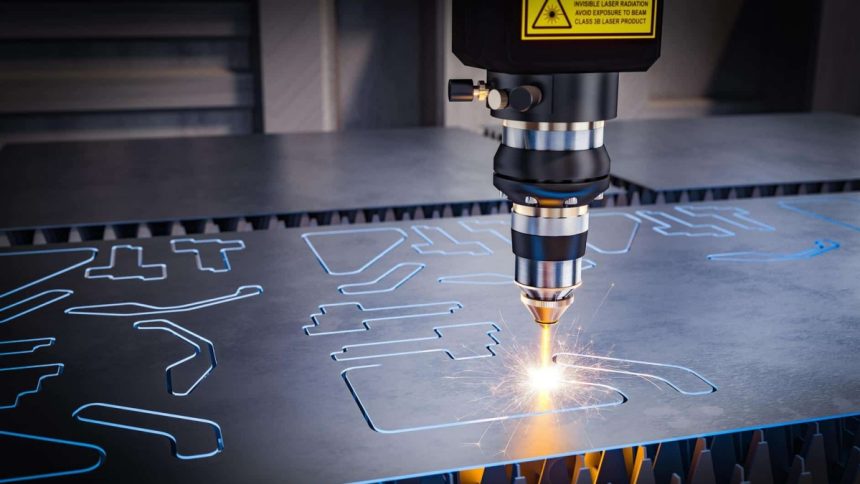In the diverse landscape of modern manufacturing, laser-cutting machines, and laser engravers stand out as pivotal tools across various industries, including electronics, automotive, fashion, and arts and crafts. These machines accelerate production processes and enhance precision and material handling. Choosing the right machine is a crucial strategic decision. This expanded guide will discuss the types of laser machines, evaluate their applications across different sectors, and provide detailed insights on choosing the best machine for your business needs.
1. Overview of Laser Machine Types
CO2 Lasers: Primarily used in non-metal material applications, CO2 lasers are versatile tools capable of cutting and engraving wood, acrylic, glass, leather, and fabrics. Their widespread usage stems from their efficiency and cost-effectiveness in handling a broad range of materials except for metals.
Fiber Lasers: Known for their robustness and precision, fiber laser cutting machines are particularly suited for processing metals. These machines are essential in sectors requiring high-precision metal cuts, like the automotive and aerospace industries, and are noted for their energy efficiency and minimal maintenance needs.
Crystal Lasers: While they are similar to fiber lasers in terms of the materials they can handle, including both metals and non-metals, crystal lasers offer advantages in applications requiring extremely high precision. However, they tend to have higher running costs and shorter lifespans compared to other types of lasers.
2. Essential Features to Evaluate
- Power Output: The machine’s power is a direct determinant of its capability to cut through various material thicknesses. Power specifications can range significantly, and choosing a higher power output generally allows for greater material thickness and faster processing speeds.
- Work Area Size: The dimensions of the machine’s bed will dictate the maximum size of the materials that can be processed. This feature should be matched closely with the typical material sizes your business uses to avoid unnecessary investments in overly large machines.
- Software Compatibility: The ability to seamlessly integrate with design software like Adobe Illustrator or AutoCAD is crucial for streamlined operations. Machines that offer flexibility in compatible software give businesses a competitive edge in product design and customization.
- Material Suitability: Specific laser machines perform better with certain materials. It’s important to match the machine with the primary materials your business processes to ensure optimal efficiency and quality.
- Speed and Precision: High production volumes demand machines that operate both quickly and precisely. Evaluating these parameters is crucial, especially for businesses with high throughput needs.
3. Industrial Applications of Laser Machines
- Manufacturing: Fiber lasers are a staple in manufacturing environments, renowned for their ability to cut thick metal sheets and components quickly and cleanly.
- Fashion and Apparel: The fashion industry benefits from the delicate touch of CO2 lasers for cutting fabric or creating intricate patterns and etchings on leather.
- Jewelry Making: The precise requirements of jewelry production are met with crystal lasers, which can finely engrave detailed designs onto various metals and gemstones.
- Crafts and Woodworking: CO2 lasers are popular among craftsmen and woodworkers for their ability to execute complex cuts and engravings on wood and other craft materials.
4. Financial Considerations
Investing in a laser cutter involves examining not only the initial purchase price but also long-term costs like maintenance, consumables, and part replacements. Budget-conscious businesses must balance these ongoing costs with the benefits each machine type offers.
5. Vendor Selection Tips
- Support and Warranty: Choosing a vendor that offers strong customer support and an extensive warranty can mitigate the risks associated with potential machine downtime.
- Training and Resources: Some vendors provide training sessions and software packages as part of the purchase, adding value and ensuring you can fully leverage the machine’s capabilities from day one.
- Customer Reviews and Reputation: Researching vendor reputations and reading customer reviews can provide insights into the reliability and performance of their machines.
Conclusion
Selecting the right laser-cutting machine or engraver is more than a purchasing decision—it’s a strategic one. With a clear understanding of the different types of machines available and a thorough assessment of your business’s specific needs, you can choose a machine that not only meets your current requirements but also supports future growth. The best machine for your business is one that aligns with your material, production, and budgetary needs, ensuring long-term success and efficiency.
Lynn Martelli is an editor at Readability. She received her MFA in Creative Writing from Antioch University and has worked as an editor for over 10 years. Lynn has edited a wide variety of books, including fiction, non-fiction, memoirs, and more. In her free time, Lynn enjoys reading, writing, and spending time with her family and friends.















